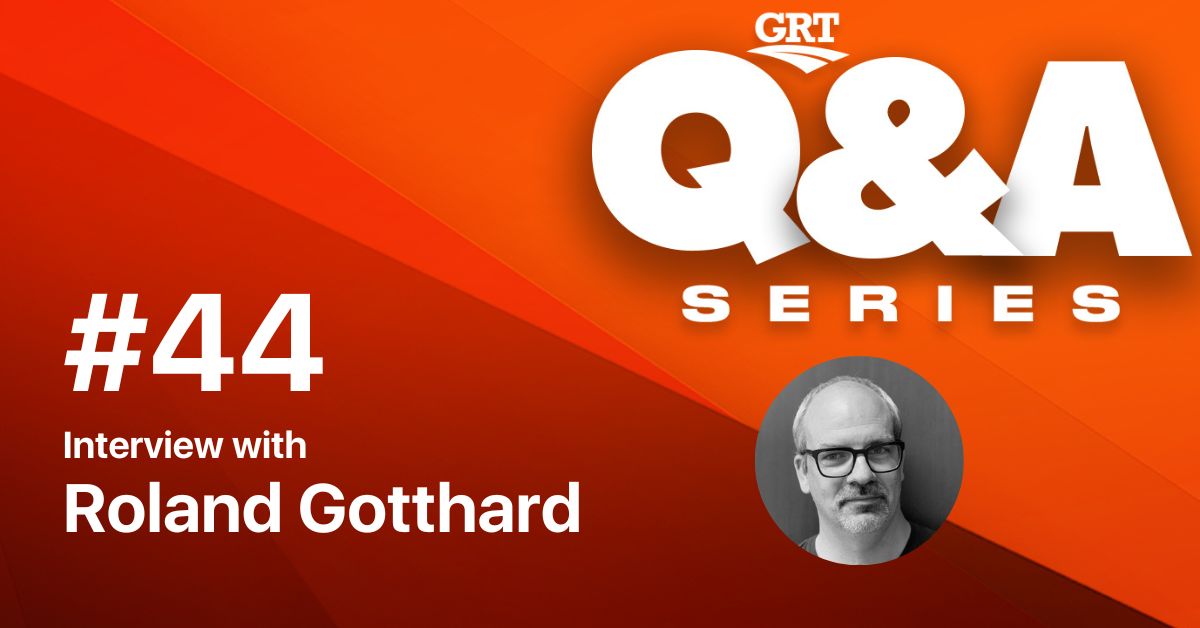Q&A series #45 : Interview with Marcus Thomson

About the guest
Marcus Thomson is Manager of Business Development for SafeBox Systems in Sudbury, Ontario, Canada. With a background in business management and digital technologies, he has spent his career bringing innovation to the mining industry. Prior to SafeBox, he completed his Masters’ in Business Administration degree at Laurentian University and worked with non-profit entities such as Global Mining Guidelines Group, Centre for Excellence in Mining Innovation, and NORCAT. In those roles, he developed partnerships for global collaboration between mining standards and guidelines associations, provided commercialization services to innovative firms, and sourced start-up technologies on behalf of mining operations.
Topic of discussion: Conveyor maintenance safety
Conveyor systems are designed to move bulk materials efficiently from one place to another and changes of grades and/or direction in the conveyor system are called transfer points.
Conveyor maintenance safety is key to in-pit crushing and conveying haulage systems for open pit mines. This can be a very hazardous job if all energy sources aren’t isolated before work begins. It can also be quite time-consuming to perform this energy isolation.
SafeBox is a company that offers safety-rated, single-point lockout system that mechanically isolates electrical, hydraulic, and pneumatic energy for conveyor maintenance.
Their safety-rated energy isolation hardware is engineered to regional standards. SafeBox reduces operator burden by centralizing on the LOTO (lockout/tagout) process, giving operations the ability to capitalize on time spent on high-occurring or lengthy LOTO process.
In this GRT Q&A, we speak to Marcus Thomson, a Business Development Manager from SafeBox. Our conversation is focused on different aspects of conveyor maintenance safety. He is based in Sudbury, Ontario, Canada.
Q1) A warm welcome to the GRT Q&A Series Marcus. It’s a pleasure to have you. Please tell us more about you and kindly take us through your journey with SafeBox?
Thank you very much for having us! SafeBox was developed by industrial automation and engineering company Ionic Mechatronics. Ionic has been in business since 1999 and has implemented a wide range of automation systems across many industries and geographies. Most recently, a uranium packaging line was completed, representing the very first robotic arm for uranium in Northern Saskatchewan.
For automated lines requiring operator intervention, automation for machine safeguarding is well established. There are a wide range of available pull-cords, gate switches, light curtains, and other interlocking devices. However, for maintenance intervention, it is still extremely manual, using lockout/tagout in an often time-consuming and hazardous way.
Many lockout/tagout processes are complex and take upwards of several hours to complete. When they’re required frequently, this process costs many operations millions of dollars in downtime and lost productivity. Applying automation to maintenance intervention is a lot trickier, as a much higher standard for safety is necessary, but we felt it was worthwhile and that operations could benefit greatly from this technology.
Though SafeBox is also applicable to other complex lockouts within heavy industry, overland conveyor maintenance is a key application. Before work can begin, it’s necessary to drive long distances to lockout disconnects. Performing these isolations also often requires electricians with specialized skills. SafeBox lets maintenance workers lockout all energy sources at once using Master boxes located along the conveyor, without any special skills.
Q2) Mining is an industry that heavily relies on conveyor belt systems and transfer points. What is the importance of conveyor maintenance safety?
Conveyor maintenance safety is important because conveyors can be very hazardous. There is a possibility not only of non-isolated energy affecting maintenance, but also stored energy. Lockout/Tagout is a big component of ensuring worker safety, and there are hazards even when executing the proper steps. Arc flash is an electrical explosion that can happen when opening/closing connections. This is more common than one might think. For instance, in the United States, there are 30,000 injuries and 400 fatalities each year from arc flash. Overland conveyors are particularly susceptible to dangerous arc flash explosions because they are powered by very large motors with heavy-duty electrical current requirements.
Q3) Autonomous mining is on the rise across the world. The deployment of autonomous technologies across creates room for increase in productivity. What is the role of conveyor belts in driving autonomous mining?
Autonomous trucks and conveyors are both tools for material haulage and can be well suited to work together. However, conveyor haulage has been around for longer, so often sites are applying autonomous haulage in addition to existing conveyor infrastructure. In some instances, this requires collaboration that operations didn’t have to consider before. For example, one coal-mining operation has an overland conveyor that requires frequent maintenance, but electrical disconnects are located on the other side of an autonomous haulage zone. When lockout/tagout is needed, there is communication required between departments, which extends the time and effort required to perform conveyor maintenance. When dealing with changes to complex infrastructure, these types of situations can be difficult to avoid or require trade-offs.
Q4) Conveyors can be several kilometres long. What challenges are faced during maintenance of such lengthy conveyors? Is predictive maintenance a solution to these challenges?
With long conveyors, disconnects are very far away from where maintenance needs to happen. Due to the size of the conveyor, motors can also be quite large, with heavy-duty electrical disconnects often requiring electricians to properly isolate energy. Plus, they are often operational bottlenecks, so any downtime is directly linked to productivity. If predictive maintenance provides the opportunity to reduce downtime and cost by optimizing maintenance programs, then it should also be something worth considering.
Q5) Reducing lockout time to seconds. What does this mean in a typical mining operation? Tell us more about the importance of isolating electrical, hydraulic, and pneumatic energy?
Reducing lockout time to seconds is about mining operations enhancing their maintenance processes such that all the downtime is dedicated to actual maintenance practices and less time spent preparing the asset for maintenance. Mining assets only provide value when they are operating, and maintenance is a critical element of keeping these assets in operation.
When it comes to isolating, electrical, hydraulic, and pneumatic energy, safety professionals often refer to the ‘Hierarchy of Safety Controls’. PPE and Administrative Controls at the very bottom of the hierarchy, with Engineered Controls, Substitution and Elimination at the top. For plant maintenance, PPE and Administrative Controls are still at the core of lockout/tagout, despite it representing one of the more hazardous functions within industry. So, while it’s difficult to completely substitute or eliminate the need to isolate energy before completing maintenance, engineered control are an excellent way to enhance safety and reduce physical proximity to hazards.
Q6) In closing, how has the SafeBox invention step-changed lock and tag technology forever? What more contributions can we expect from SafeBox in the future?
Step-change is an appropriate term for SafeBox, because the system reduces the number of physical steps (or kms driven) required to complete isolations, while also improving safety and removing workers from hazardous environments. However, we argue that SafeBox is more than a step-change in lock and tag. It is more aligned with a paradigm shift, one that turns the concept of a physical lock and tag on its head. A person can now lock out a complex system in seconds, regardless of the number of energy sources or the distance between them.
Regarding future contributions, the product currently uses a safety network with configurable safety outputs to SCADA. Future developments include more direct integration with job codes, worker training, and mobile access. We will continue to refine the product and improve the value SafeBox offers to mining conveyor maintenance, so new developments are on the way!

Keith Nare
Technical Head of Communications for GRT, Keith leads GRT's content strategy across various platforms, whilst coordinating internally to build the voice and opinions of the GRT team. Keith is a product of Nelson Mandela University and his PhD work focuses on Polymer and Physical Chemistry. He was a Research Associate at SANRAL in South Africa and later spent time as a Visiting Research Associate to NTEC at the University of Nottingham in the UK. He is a former Director of Communications for CALROBO in the USA.
Keith is passionate and enthusiastic about health and safety, sustainability, networking and finding synergy through conversations.
Troy Adams
Troy Adams is the Managing Director of Global Road Technology (GRT) Specialising in Engineered Solutions for Dust Suppression, Erosion Control, Soil Stabilisation and Water Management. A pioneering, socially conscious Australian entrepreneur, Troy Adams is passionate about health and safety and providing innovative solutions that are cost-effective to the mining industry, governments and infrastructure sectors. Troy is also a tech investor, director of companies like Crossware, Boost, Hakkasan, Novikov and more.









